How to fit and remove a nut and bolt?
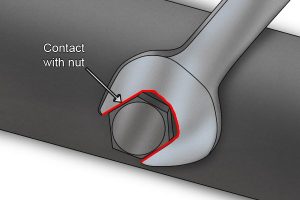
Nuts and bolts are common fasteners that hold two or more workpieces together. They can have all sorts of different head types and sizes so you will need to choose a spanner with the right profile (shape) to tighten and loosen them.
Fitting a Nut and Bolt
Step 1 – Locate Bolt Holes

You may need to drill bolt holes or they may already be in the workpieces. The bolt holes need to be slightly wider in diameter than the thread of the bolt so the bolt can slide through the holes easily.
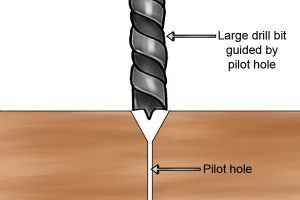
If the bolts are large then you will need to drill a ‘pilot’ hole where the bolt hole needs to be so that the larger drill doesn’t damage the workpiece. The pilot hole will also act as a guide, drawing the drill into the right place.
Step 2 – Line Up Bolt Holes
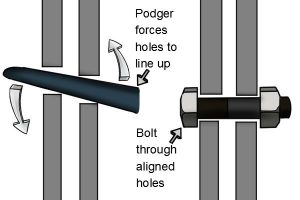
Move the workpieces so the bolt holes line up. If you have a podger, push the spiked end through the first hole and wiggle it around until it is through the second hole. Once the spike is through both holes, remove the podger and slide the bolt into its place. It is possible to use the bolt as a sort of podger but be careful because it can damage the threads.
Step 3 – Fit the Nut

Fit the nut onto the exposed threaded end of the bolt. Turn it clockwise with your fingers until it is too tight to turn.
Step 4 – Use Your Spanner

Fit the spanner onto the nut. Some spanners fit onto the nut from the side, others from above it.
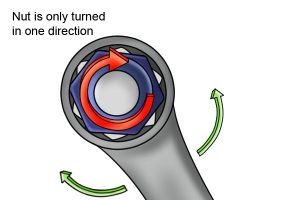
Hold the shaft of the spanner and turn it clockwise as far as you can. If it is a ratchet spanner, turn it back anticlockwise when you can’t go any further, then turn it clockwise again to tighten it. Keep doing this until the nut is too tight to turn easily.

If you find you are actually loosening the nut, turn the ratchet spanner over and use it from the other side OR flick the lever to change the direction of the ratchet and try again.
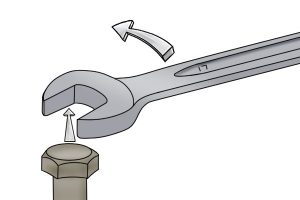
If you are using a non-ratcheted spanner, you will need to remove and replace the spanner to keep tightening the nut. Lift the spanner off the nut and turn it back to the starting position (as far to the right as it will go). Replace it on the nut and turn the spanner clockwise, turning and tightening the nut.
Step 5 – Troubleshooting
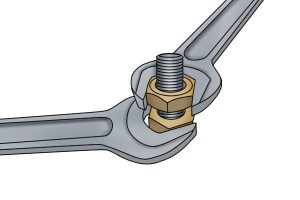
If the bolt is spinning in the bolt hole and the nut is not tightening, use another spanner to hold the head of the bolt still while you tighten the nut.

If the nut is not spinning on the thread of the bolt properly, check the threads of both the nut and bolt for debris (e.g. rust) or damage and make sure they are sitting straight on each other. The nut should turn easily on the bolt. A drop of oil might ease the movement but damaged fasteners need to be replaced.
Removing a Nut and Bolt
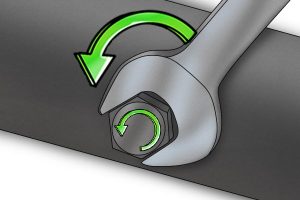
Removing the nut and bolt is the same as fitting it but in the opposite direction! Use your spanner to loosen the nut by turning it anticlockwise on the bolt shaft. Once it is loose, use your fingers to spin the nut off the rest of the way.

Slide the bolt out of the holes. You may need to wiggle the workpieces about to loosen the connection to remove the bolt. See How to undo a stuck fastener if the nut and bolt is too difficult to loosen.






